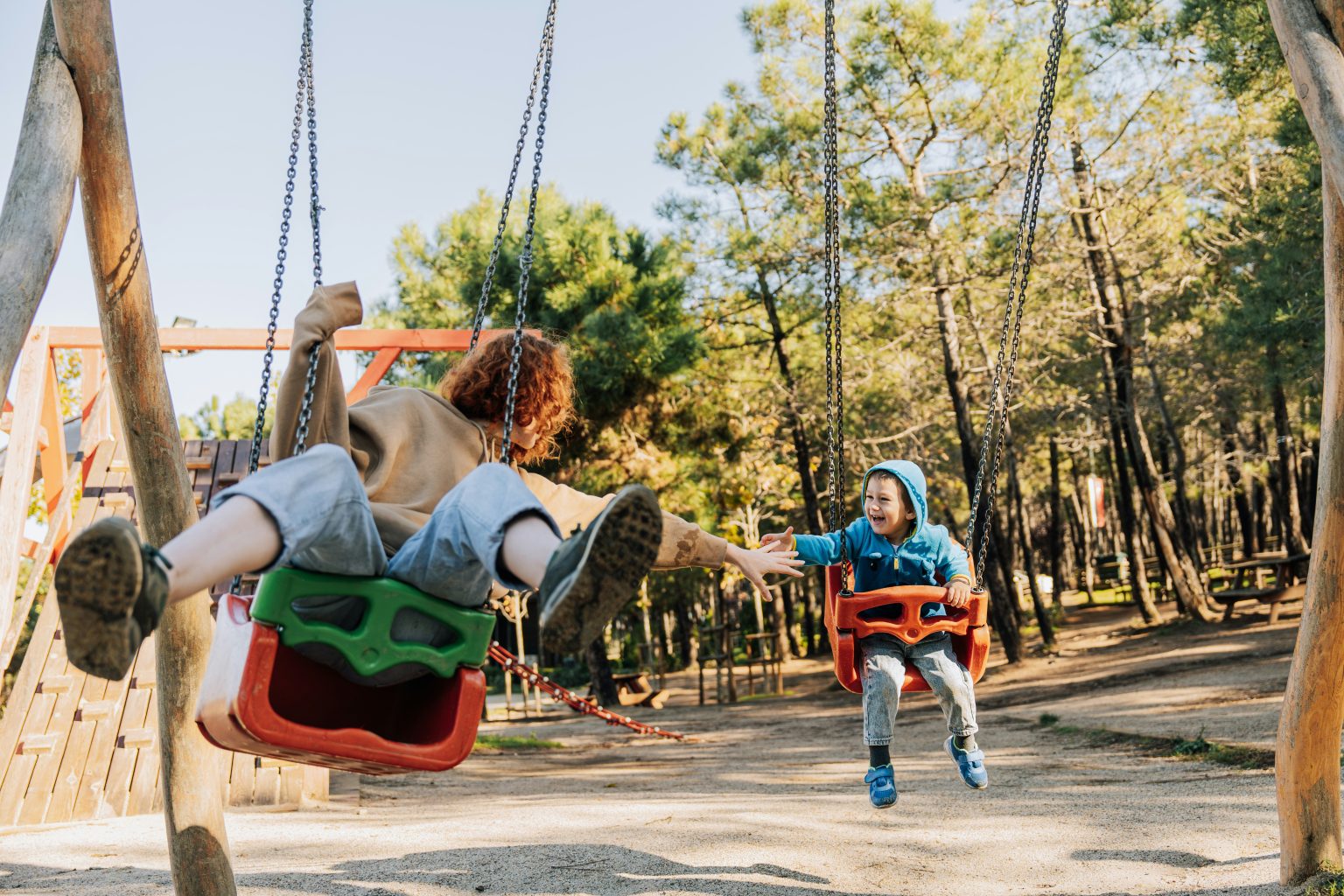Creating engaging and stimulating play environments for children is crucial for their physical, social, and cognitive development. However, many schools, nurseries, and community spaces face the challenge of limited outdoor areas. Designing a playground that offers a diverse range of play opportunities within a restricted footprint requires careful consideration and a focus on clever, space-saving equipment. This blog post explores the best playground equipment options for limited spaces offered by Caloo, demonstrating how to maximise fun and functionality without compromising on play value.
The Vertical Advantage: Multi-Activity Towers and Climbing Frames
When ground space is at a premium, thinking vertically is key. Multi-activity towers and compact climbing frames are excellent solutions for packing a variety of play features into a relatively small area.
- Multi-Activity Towers: These cleverly designed structures often incorporate a range of activities stacked vertically, such as slides, climbing walls, rope nets, tunnels, and platforms at different heights. They allow multiple children to play simultaneously, engaging in different activities within a single footprint. Look for modular designs that can be adapted to fit specific space constraints and offer a variety of challenges for different age groups.
- Compact Climbing Frames: Well-designed climbing frames can offer significant play value in a small area. Options like climbing cubes, geometric climbers, and smaller modular frames provide opportunities for physical development, problem-solving, and imaginative play without taking up excessive ground space. Consider frames with integrated features like cargo nets or small slides to further enhance their playability.
Swinging Solutions: Space-Efficient Swing Sets
Swings are a playground classic, loved by children of all ages. While traditional swing sets can be linear and require a significant safety zone, there are space-efficient alternatives available.
- Single Point Swings: These swings, such as tyre swings or basket swings suspended from a single point, offer a dynamic swinging experience with a smaller safety radius compared to traditional two-point swings. They can be a great way to incorporate swinging into a limited space.
- Compact Swing Sets: Look for swing sets with A-frame designs or those that can be integrated into multi-activity towers. Consider options with a smaller number of swings or those that utilise space more efficiently. Ensure the safety surfacing extends appropriately around the swing area.
Sliding Smart: Integrated and Compact Slides
Slides are another playground staple that can be adapted for smaller spaces through integrated designs and compact forms.
- Integrated Slides: Incorporating slides into multi-activity towers or climbing frames is an excellent way to save space. These slides often start from elevated platforms within the main structure, eliminating the need for a separate access point and reducing the overall footprint.
- Short and Wavy Slides: For very limited spaces, consider shorter, wavy slides. While they may not offer the same length of descent as larger slides, they still provide the fun sliding experience in a more compact form. Ensure the landing area is appropriately surfaced for safety.
Creative Ground-Level Play: Imaginative and Sensory Features
Not all engaging play needs to be elevated. Ground-level play features can stimulate imagination and sensory exploration without requiring significant space.
- Play Panels: Interactive play panels, featuring activities like mazes, gears, musical instruments, or storytelling elements, can be installed along fences or walls, utilising vertical space and providing engaging play opportunities without a large footprint.
- Sensory Play Features: Incorporating sensory elements like sand and water play tables, textured surfaces, or musical chimes can add significant play value to a small area. These features encourage exploration and engagement without requiring extensive space.
- Themed Ground-Level Play: Small themed elements, such as stepping stones shaped like animals, small playhouses, or natural play features like logs and boulders, can spark imaginative play without dominating the space.
Natural Play Integration: Bringing the Outdoors In (Small Scale)
Even in limited spaces, incorporating elements of natural play can enhance the play experience.
- Small Planting Areas: Designating small areas for planting allows children to connect with nature and engage in sensory play. Raised beds or vertical planting solutions can be used in tight spaces.
- Natural Materials: Incorporating natural materials like wood chips, sand, and small boulders can add texture and interest to a small playground, encouraging exploration and imaginative play.
- Green Walls: Vertical green walls can add a touch of nature and visual interest without taking up valuable ground space.
Safety Surfacing: Maximising Usable Space
Choosing the right safety surfacing is crucial not only for safety but also for maximising the usable play space in a limited area.
- Seamless Surfacing: Wet pour rubber or artificial grass safety surfacing can create a continuous, usable play area around and beneath equipment, eliminating the need for separate safety zones with different materials.
- Consider Contours: When installing safety surfacing, consider gentle contours and mounds that can add an extra dimension to the play space without significantly increasing the footprint.
Planning and Design Considerations for Small Playgrounds
Careful planning and design are essential for creating a successful playground in a limited space.
- Prioritise Play Value: Focus on selecting equipment that offers the most diverse range of play opportunities within the available space. Consider how different pieces of equipment can complement each other.
- Consider Age Appropriateness: Ensure that the chosen equipment is suitable for the age range of the intended users and offers appropriate levels of challenge.
- Think Multi-Functional: Opt for equipment that can serve multiple purposes. For example, a climbing frame with an integrated slide offers two activities in one footprint.
- Utilise Vertical Space: As mentioned earlier, maximise the use of vertical space with multi-activity towers and wall-mounted features.
- Create Zones: Even in a small space, try to create distinct play zones to offer variety and cater to different play styles. This could be achieved through the arrangement of equipment and the use of different surfacing materials.
- Consider Circulation: Ensure that there is adequate space for children to move safely between different pieces of equipment.
- Leave Room for Imaginative Play: Don’t overcrowd the space with fixed equipment. Leave some open areas that children can use for imaginative games and free play.
- Seek Professional Advice: Consulting with experienced playground designers can help you to maximise the potential of your limited space and create a truly engaging play environment.
Conclusion
Designing a playground in a limited space requires creativity and a focus on space-saving solutions. By prioritising vertical play, considering compact swinging and sliding options, incorporating engaging ground-level features, and carefully planning the layout and safety surfacing, it is possible to create a vibrant and stimulating play environment that maximises fun and developmental opportunities, even within the smallest of footprints. The key is to choose equipment wisely, think strategically about space utilisation, and prioritise play value to ensure that children have access to enriching and enjoyable play experiences, no matter the size of the playground.



